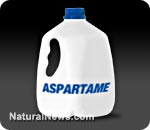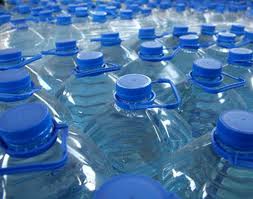Yet another informative and thoroughly researched article from Vreni at Wellness Tips…
Raw Milk vs Pasteurized – The Science
My farmer was found guilty of contempt of court this week for producing and delivering an illegal “hazardous substance” to me. The substance in question? Elicit drugs? Assault rifles? Anthrax or other deadly agent? No. The hazardous substance they are spending our tax dollars on preventing me from obtaining is raw milk. If my farmer continues to care for and milk my cows for me and give me the milk from my cows, he will be sent to jail.
To me this seems like Orwellian joke. Who is the victim in this milk crime? Is this a crime that deserves a jail sentence? On the one hand Big Brother is trying to protect me from my milk, and on the other, Big Brother refuses to tell me which foods in the grocery store are genetically modified.
I can buy ground beef, take it home and eat it raw but raw milk, which also comes from cows, is so dangerous it can’t be transported across town and given to me.
So, what is the science with respect to raw milk? Is the government’s position warranted? Independent researcher Nadine Ijaz MSc recently presented “Raw Milk: Myths and Evidence” at the BC Center for Disease Control, examining the recent research on raw milk. Please watch her excellent presentation. What follows is a summary of the points Ms. Ijaz makes in her presentation, and I suggest that you watch the presentation to hear about each of these points in more detail.
Myth 1: No evidence that raw milk is more digestible for people with lactose intolerance
A surprise to raw milk enthusiasts, but this is a myth. There is no lactase in fresh milk.
Myth 2: Enzymes and beneficial bacteria make raw milk more digestible
There are many enzymes and bacteria strains in milk, but at the present time there is no evidence to describe their role in human digestion. There is some evidence that the non-harmful lactic-acid bacterium may aid in keeping the bad bugs at bay.
Myth 3: Raw milk is known to prevent osteoporosis, cancer, arthritis, diabetes
Currently there is very little evidence to examine these questions, and the existing evidence does not substantiate the claims. Those of us that are raw milk enthusiasts need to be careful that we do not spread unsubstantiated claims, as that reduces our credibility.
Myth 4: Raw milk is a high-risk food
To determine if a food is risky, we need to know the risk per serving, as well as the rates of sickness, hospitalizations and deaths, along with how risky the food is for immunologically susceptible people.
Quantitative Microbial Risk Assessment (QMRA) is the gold standard for determining pathogenic risk. QMRA studies characterize the risk of a particular food as low, moderate or high.
Recent QMRA studies for raw milk show that there is a LOW risk for illness / severe health outcome for E-Coli, Listeria, Staphylococcus and Campylobacter. We do not yet have a QMRA for salmonella.
To confirm accuracy of QMRAs, outbreak data is used. There has not been a single case of Listeria sickness from raw milk in the last 40 years. There has not been a single death from raw milk since 1998.
One to 6% of foodborne illnesses are attributed to all dairy, raw and pasteurized combined. An extremely small percentage of illnesses and hospitalizations from food-borne illnesses are attributed to raw milk. The rate of hospitalization from raw milk was significantly lower than that from all other foods.
Green leafy vegetables are the most frequent cause of foodborne illness representing 20 percent of all cases between 1998 and 2010. Yet the government has not named green leafy vegetables a hazardous substance.
Myth 5: Raw milk has no unique health benefits
There is strong evidence that the consumption of raw milk has a protective effect on the development of asthma and allergies. Ten studies suggest this.
The most recent study corroborating this evidence is the Gabriella study on 8000 school-aged children in Europe. Both blood samples and milk samples were taken, and study showed that there is an independent protective effect of raw farm milk on the development of asthma, allergy and hay fever by about half. That is HUGE! There is a suggestion that some of the whey proteins that are sensitive to heat and would be destroyed in pasteurization might be involved.
We used to think that each vitamin or mineral works in isolation, and as long as they are in the diet, all will be well. Many studies suggest that there are not large differences in nutrients between pasteurized and raw milk. Now we know that vitamins do not work in isolation – vitamin D works with magnesium and calcium for example.
Perhaps it is this synergistic action of the nutrients that might explain why even small nutrient changes can make big differences in how the milk works in our bodies. Vitamin A gets concentrated after pasteurization, whereas vitamins C, B and E are decreased. Perhaps the minor alteration in these ratios have major affects on how they work in our bodies.
The recent Pasture Cohort Study of 2012, showed that pregnant mothers that drank raw milk had newborns with improved immunity and decreased cow-milk allergy. Infants drinking raw cow milk before the age of one had better immune gene expression. Risk/benefit analysis seems to pertain specifically to some of the most susceptible groups.
Myth 6: Industrial milk processing is harmless to health
There are 4 processes of industrial milk production that milk drinkers may object to – pasteurization, homogenization, vitamin D fortification, and grain/sillage/soy feeding practices.
Some people are choosing raw milk in order to opt of the industrial process. This is the primary reason I personally prefer raw. Due to the precautionary principle it is reasonable to do so.
Pasteurization or heat treatment has already been discussed.
Homogenization is the process of putting the milk through a fine screen at high pressures to break up the fat globules so the fat won’t rise to the top. This is done to improve shelf life primarily. “Homogenization results in the most profound difference to the structure of the milk, and may result in altered health properties” Michalazki Janual 2006: 424. It affects the fat globule membrane and the organization of the proteins.
It has been hypothesized that homogenization might be the reason that raw milk is protective for asthma and allergy.
Vitamin D3 fortification: A recent 2012 reviewsuggests that vitamin D from the sun is quite different from synthetic vitamin D. There is another study that suggest that kids that are taking vitamin-D fortified milk have lower serum ferritin (iron) status. Individuals may use the precautionary principle and opt out of industrial milk for this reason.
Contemporary feeding practices: Consumers are looking for grass-fed milk that have a more beneficial fatty-acid profile with higher omega 3 and CLA content.
Current evidence does not support:
- That people should choose raw milk.
- That pregnant women should drink raw farm milk
- That public health should recommend that parents should give their babies and kids raw farm milk.
The current evidence does however, support choice.
“It is scientifically reasonable for people, including pregnant women and parents of young children to choose hygienically produced raw milk over industrially produced milk, whether or not they heat it themselves afterwards. It is not scientifically justifiable to prohibit people, including pregnant women or parents of young children from choosing to seek out an important food which may effectively prevent allergy and asthma.” Nadine Ijaz.
So what is the role of public health enforcement?
- Limitations should be proportional to the risk posed by the by a given hazard.
- Enforcement should be consistent across foods (salad is far riskier than raw milk but is not deemed a hazardous substance).
- There should be a balancing of individual rights with public protection. In the case of our herd share, none of our milk goes into public commerce, so there is no risk at all to public safety.
We need to focus on minimizing risk to reasonable levels. No other food has a zero hazard tolerance threshold. It is important to realize that pasteurization is no guarantee that the milk will be risk-free.
The evidence no longer supports raw milk being designated as a health hazard. Instead governments should consider regulation, mitigation and education in light of the existing evidence.
I sincerely hope that Nadine’s presentation gets viewed and shared. If you know any health reporters that can take on this story, please let them know.
The war on raw milk and on farmers that are trying to feed a community that wants the food they provide, needs to end. Year after year we hear of farmers being prosecuted and forced out of business for providing food to those that want it. Most recently, Wisconsin is threatening to jail farmer Hershberger despite being acquitted of 3 of 4 charges related to his raw-milk coop.
We as individuals should have the right to determine what we want to eat, whether that involves raw milk, or avoiding GMO food. We need help making this a national conversation. If you can help, please do!
Copyright 2013 Nadine Ijaz MSc, Vreni Gurd
Reprinted with permission
Wellness Tips




